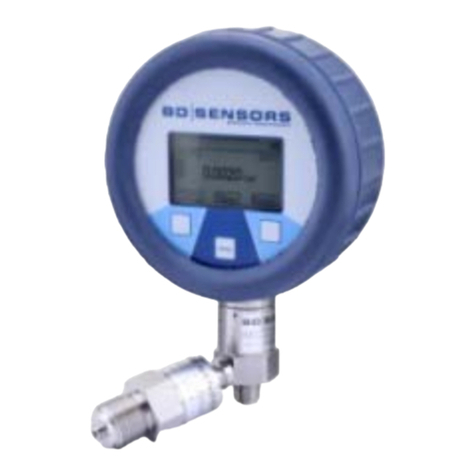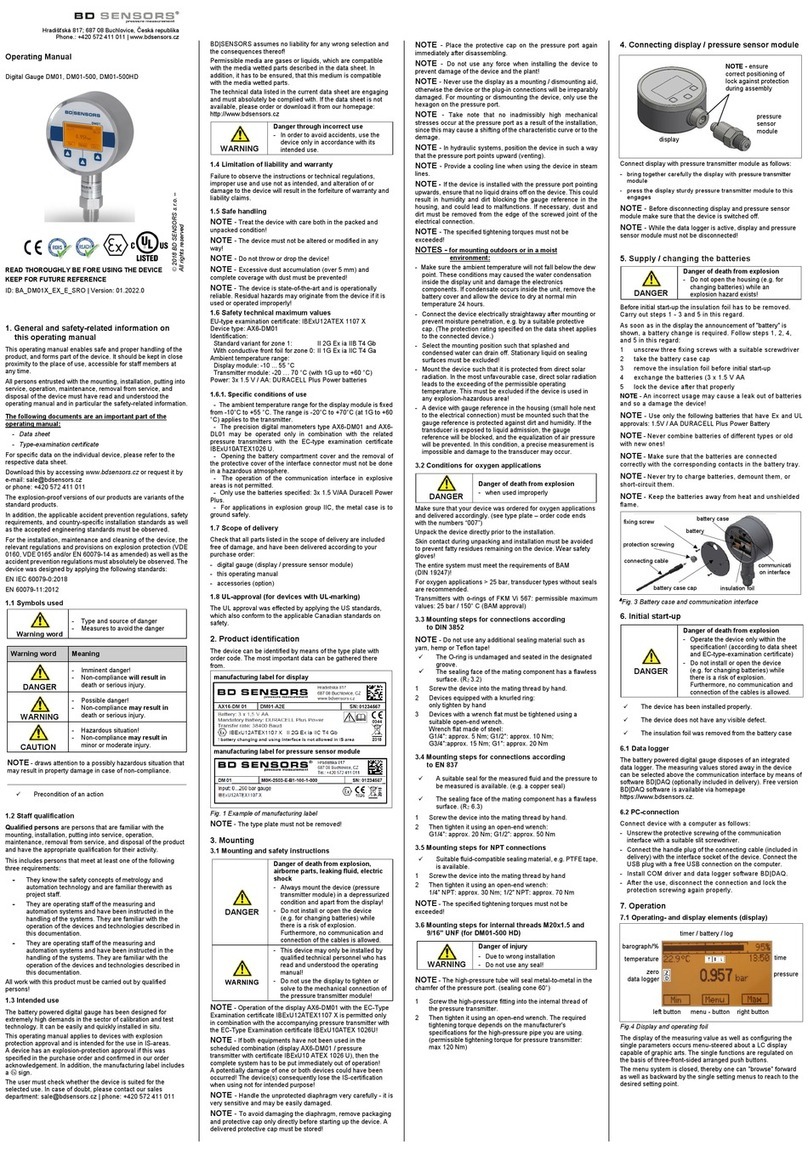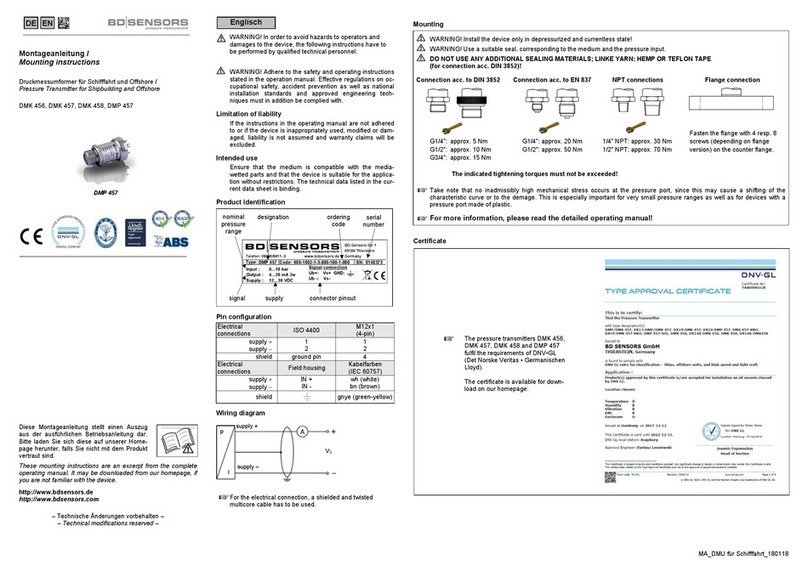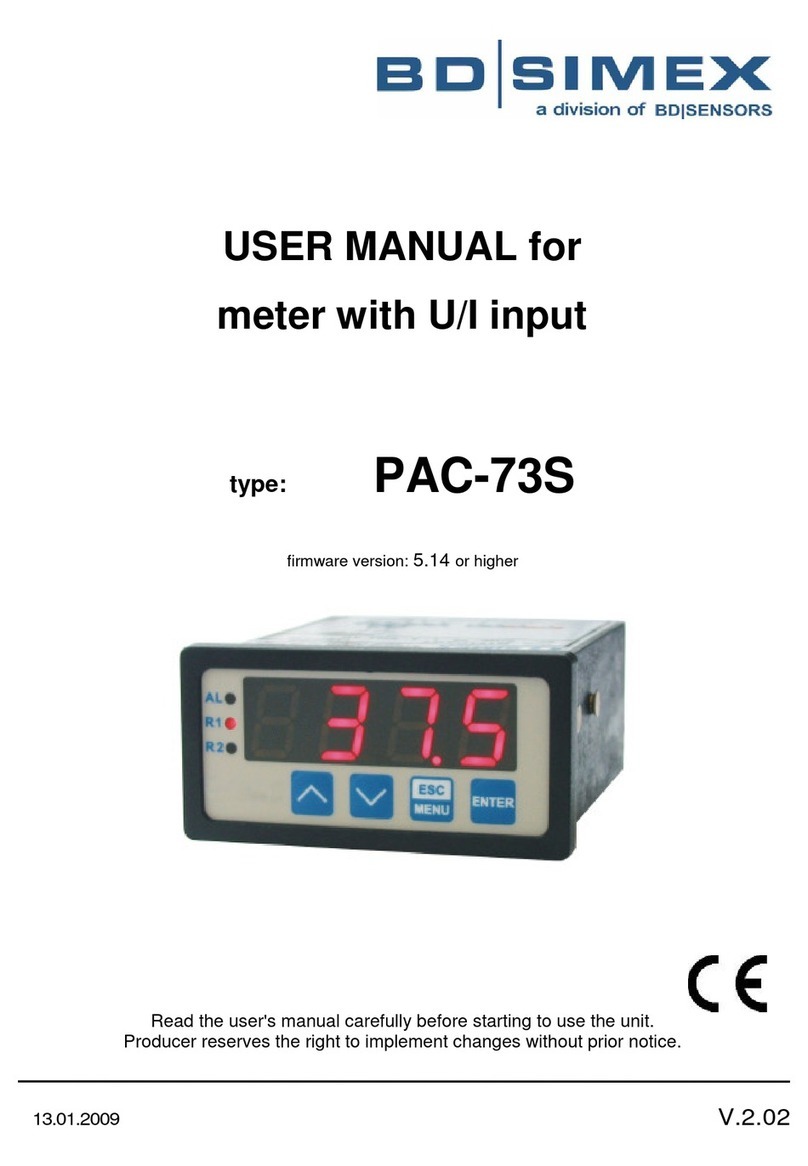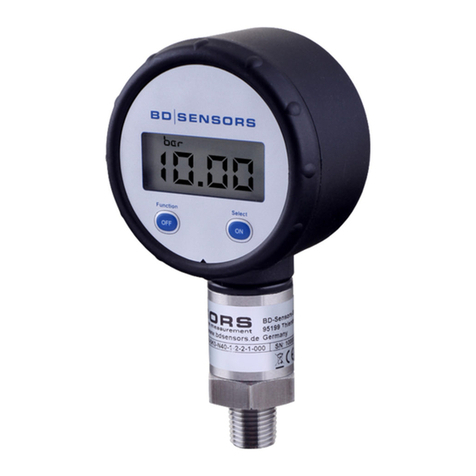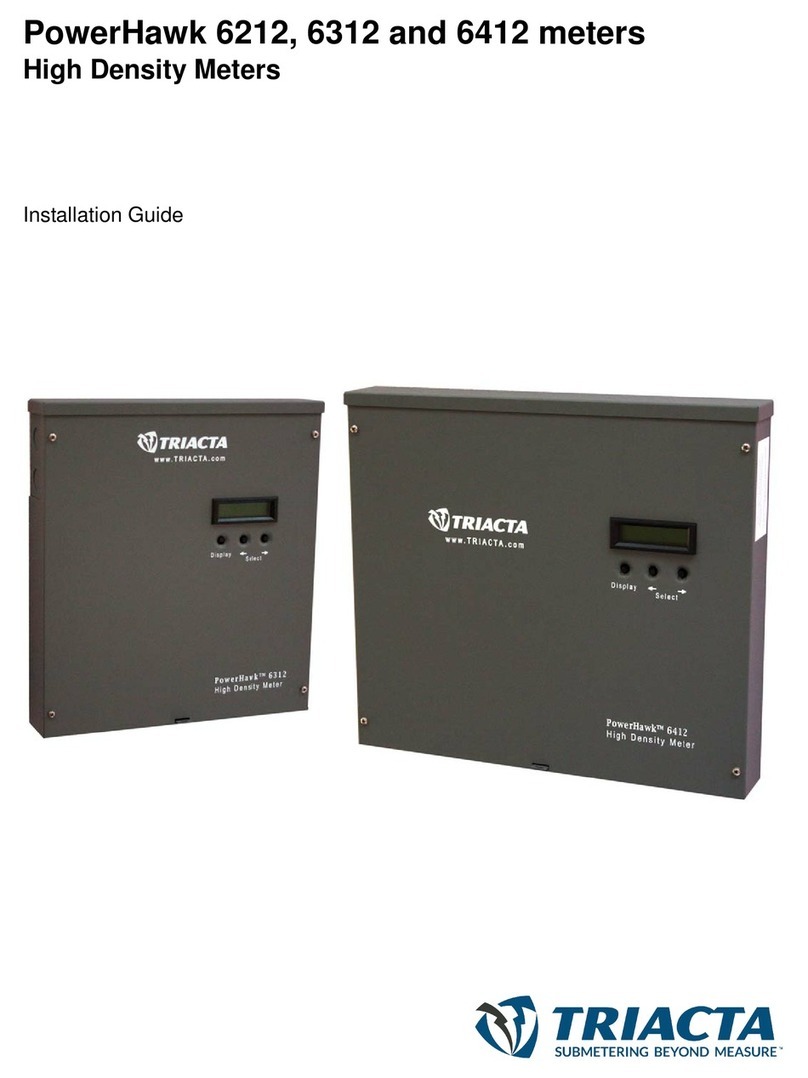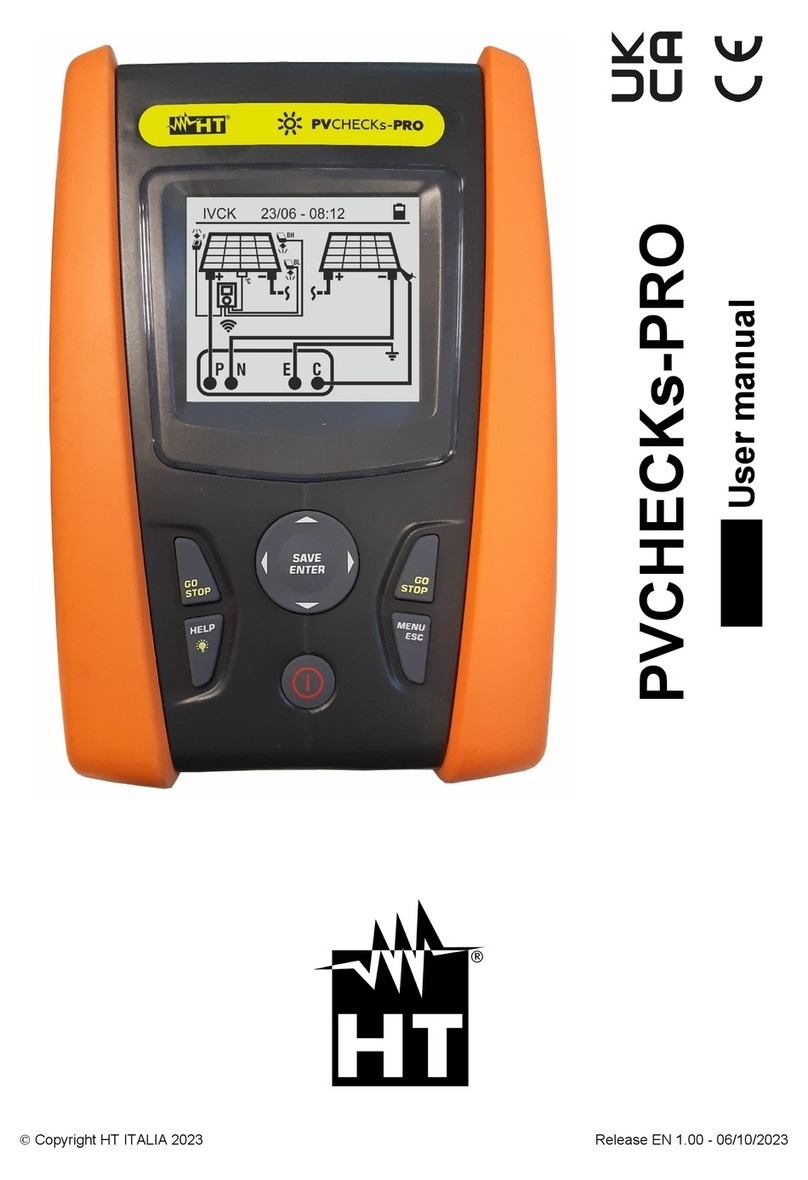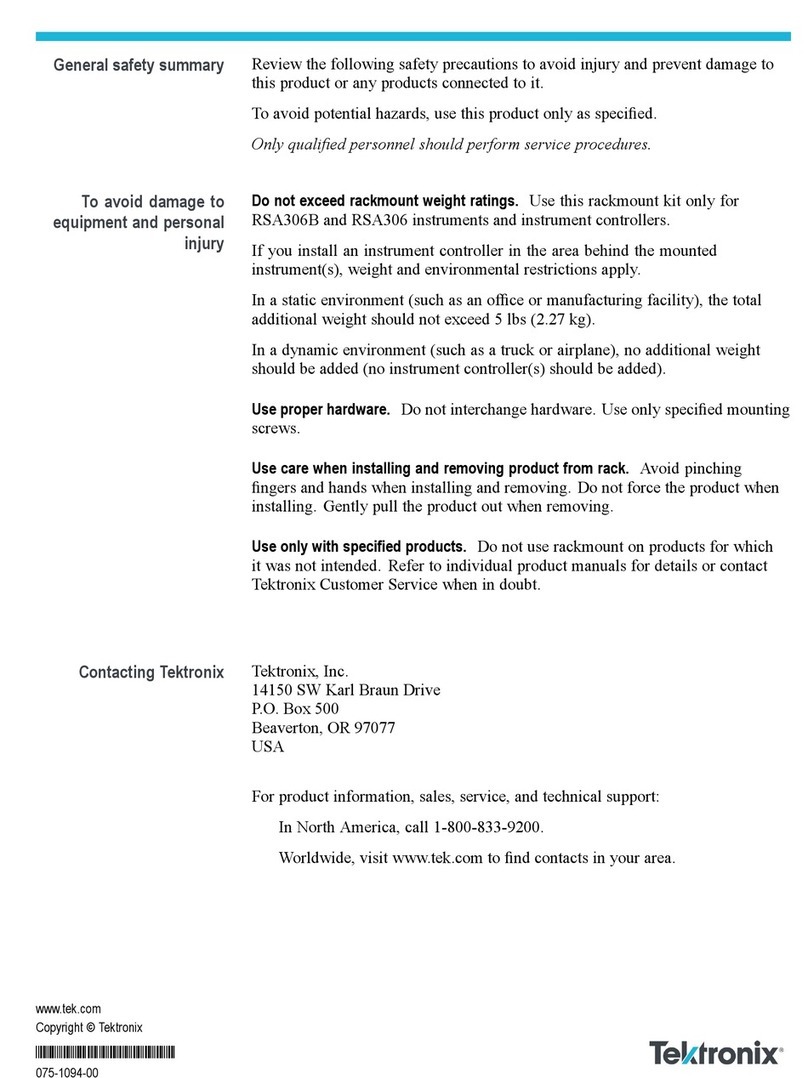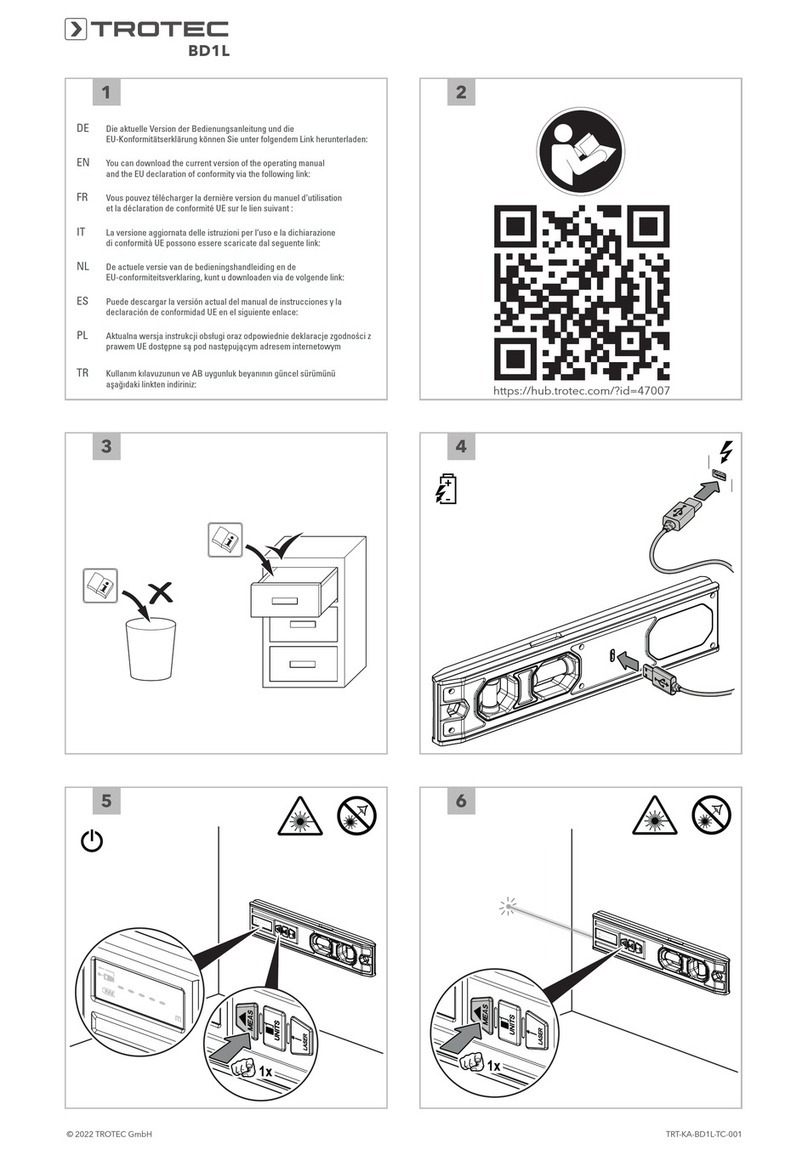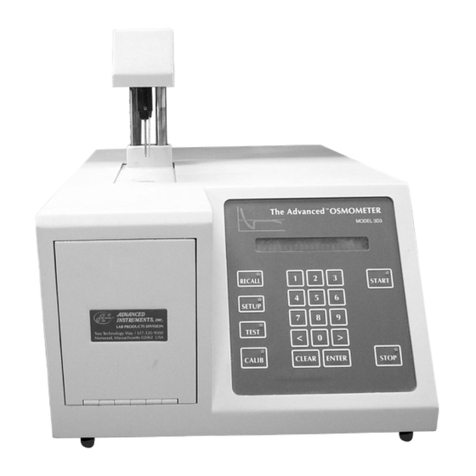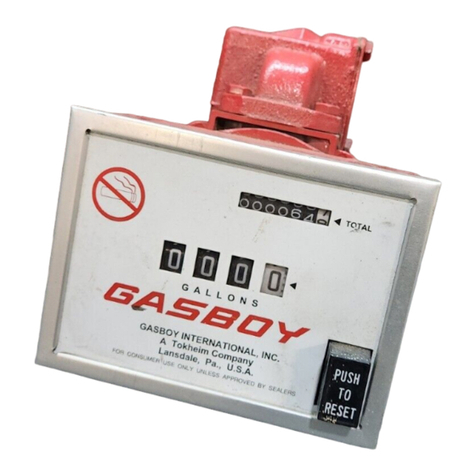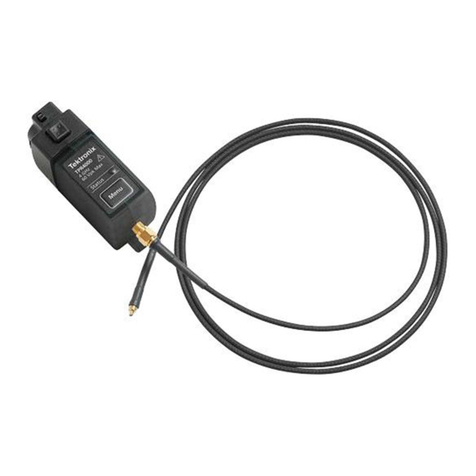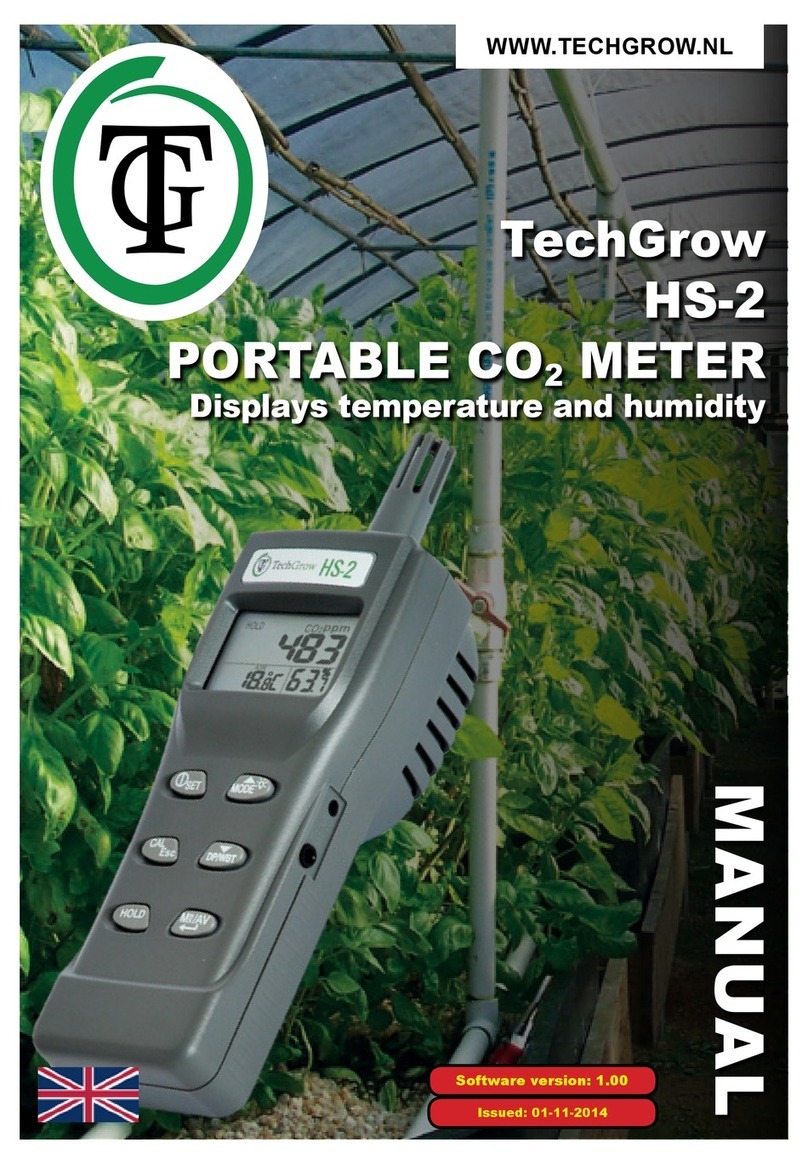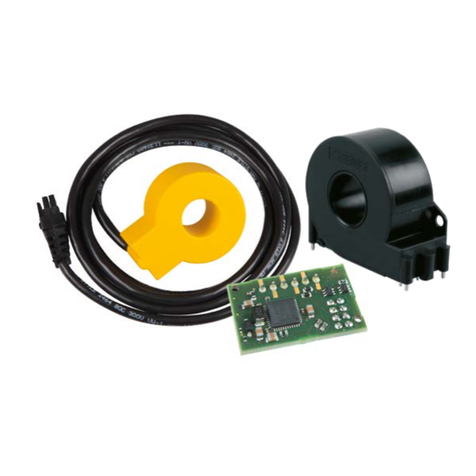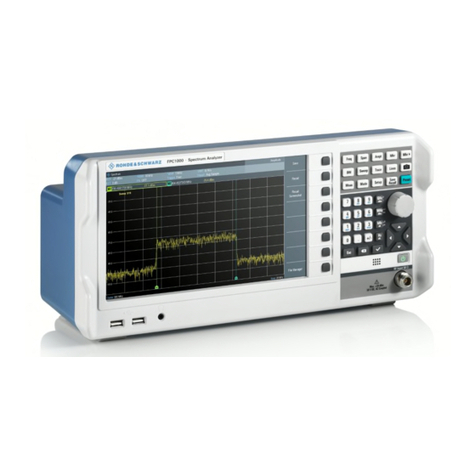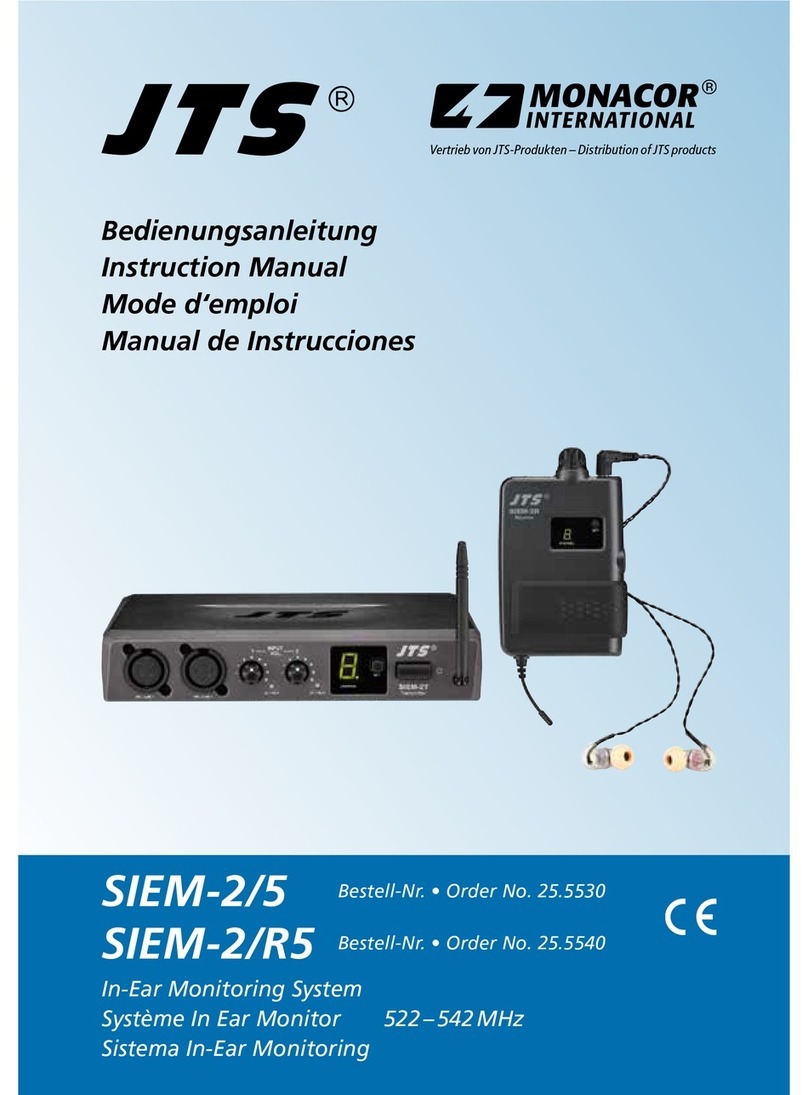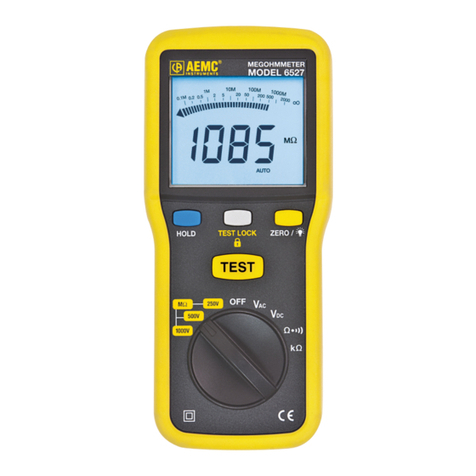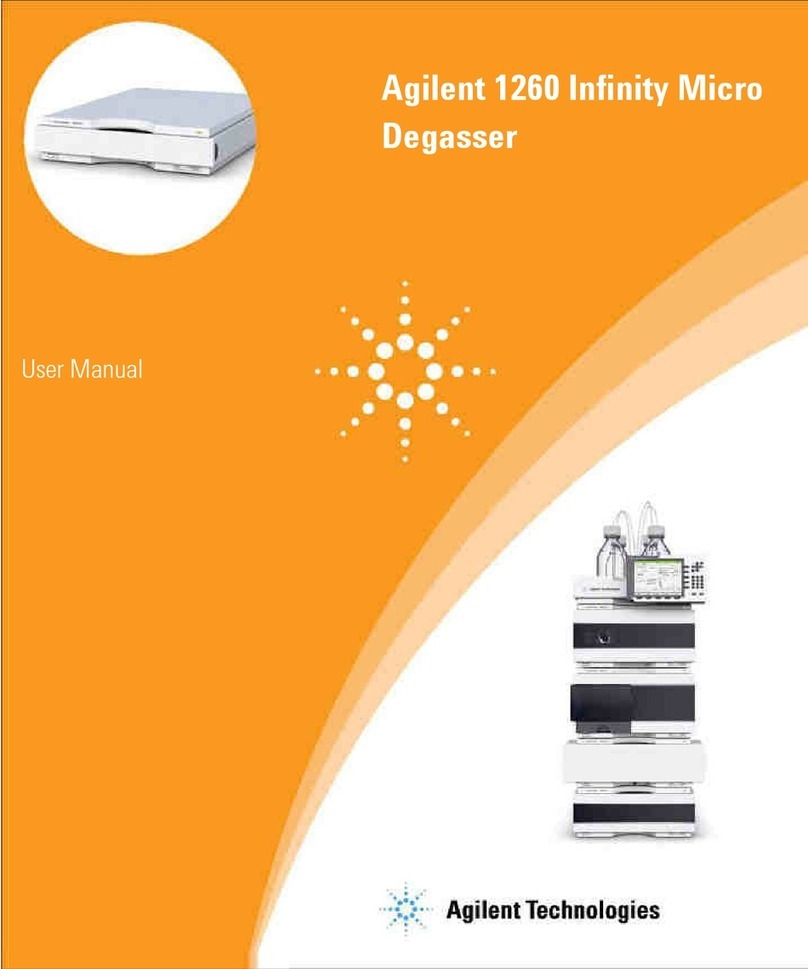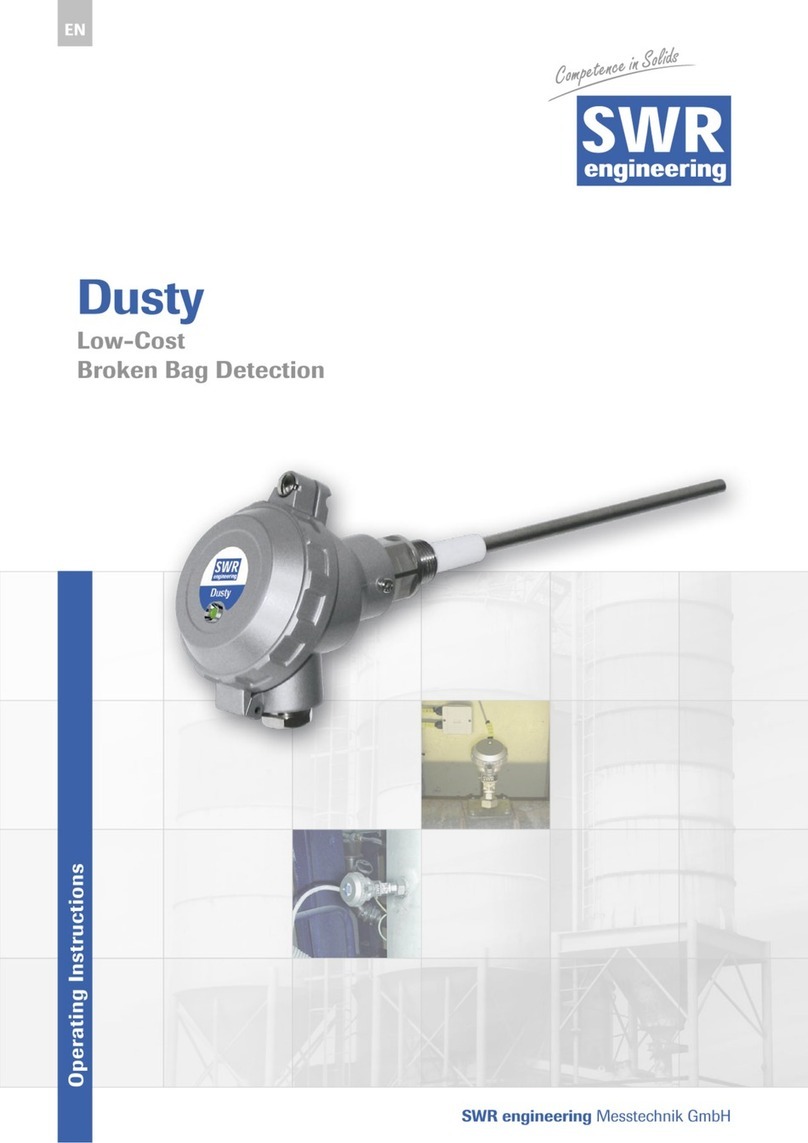BD Sensors LMK 306 User manual

www.bdsensors.com
EN
Operating Manual
Probe LMK / LMP
LMK 306, LMK 307, LMK 307T, LMK 309, LMK 358,
LMK 358H, LMK 382, LMK 382H, LMK387, LMK 387H
LMK 806, LMK 807, LMK 808, LMK 809, LMK 858,
LMP 305, LMP 307, LMP 307iLMP 307T, LMP 308,
LMP 308i, LMP 808
Headquarters
BD SENSORS GmbH
BD-Sensors-Str. 1
D - 95199 Thierstein
Germany
Tel.: +49 (0) 9235-9811-0
Fax: +49 (0) 9235-9811-11
Eastern Europe
BD SENSORS s.r.o.
Hradištská 817
CZ - 687 08 Buchlovice
Czech Republic
Tel.: +42 (0) 572-4110 11
Fax: +42 (0) 572-4114 97
Russia
BD SENSORS RUS
39a, Varshavskoe shosse
RU - Moscow 117105
Russia
Tel.: +7 (0) 95-380 1683
Fax: +7 (0) 95-380 1681
China
BD SENSORS China Co, Ltd.
Room B, 2nd Floor, Building 10,
No. 1188 Lianhang Rd.
201112 Shanghai,
China
Tel.: +86 (0) 21-51600 190
Fax: +86 (0) 21-33600 613
The addresses of our distribution partners are listed on our
homepage www.bdsensors.com. It is possible to download
data sheets, operating manuals, ordering codes and certifi-
cates, as well.
1. General information
1.1 Information on the operating manual
This operating manual contains important information on
proper usage of the device. Read this operating manual
carefully before installing and starting up the pressure
measuring device.
Adhere to the safety notes and operating instructions which
are given in the operating manual. Additionally applicable
regulations regarding occupational safety, accident preven-
tion as well as national installation standards and engineer-
ing rules must be complied with!
This operating manual is part of the device, must be kept
nearest its location, always accessible to all employees.
This operating manual is copyrighted. The contents of this
operating manual reflect the version available at the time of
printing. It has been issued to our best knowledge. BD
SENSORS is not liable for any incorrect statements and
their effects.
– Technical modifications reserved –
1.2 Symbols used
DANGER! – dangerous situation, which may result in
death or serious injuries
WARNING! – potentially dangerous situation, which
may result in death or serious injuries
CAUTION! – potentially dangerous situation, which
may result in minor injuries
!CAUTION! – potentially dangerous situation, which
may result in physical damage
NOTE – tips and information to ensure a failure-free
operation
1.3 Target group
WARNING! To avoid operator hazards and damages of
the device, the following instructions have to be worked
out by qualified technical personnel.
1.4 Limitation of liability
By non-observance of the operating manual, inappro-
priate use, modification or damage, no liability is as-
sumed and warranty claims will be excluded.
1.5 Intended use
- The probes have been developed for continuous level
measurement. It is the operator's responsibility to check
and verify the suitability of the device for the intended
application. If any doubts remain, please contact our
sales department in order to ensure proper usage. BD
SENSORS is not liable for any incorrect selections and
their effects!
- Permissible media are gases or liquids (no solids and
frozen media), specified in the data sheet. In addition it
has to be ensured, that this medium is compatible with
the media wetted parts.
- The technical data listed in the current data sheet are
engaging and must be complied with. If the data sheet
is not available, please order or download it from our
homepage. (http://www.bdsensors.com)
WARNING! – Danger through improper usage!
1.6 Package contents
Please verify that all listed parts are undamaged included in
the delivery and check for consistency specified in your
order:
- probe
- mounting instructions
- with option SIL2 version:
Functional Safety Manual, Functional Safety Data
Sheet
2. Product identification
The device can be identified by its manufacturing label. It
provides the most important data. By the ordering code the
product can be clearly identified.
Fig. 1 manufacturing label
!The manufacturing label must not be removed from the
device!
3. Mechanical installation
3.1 Mounting and safety instructions
WARNING! Install the device only when depressurized
and currentless!
WARNING! This device may only be installed by
qualified technical personnel who has read and under-
stood the operating manual!
!Handle this high-sensitive electronic precision
measuring device with care, both in packed and
unpacked condition!
!There are no modifications/changes to be made on the
device.
!Do not throw the package/device!
!To avoid damaging the diaphragm, remove packaging
and protective cap directly before starting assembly.
The delivered protective cap has to be stored!
!Place the protective cap on the pressure port again
immediately after disassembling.
!Handle the unprotected diaphragm very carefully - it is
very sensitive and may be easily damaged.
!Do not use any force when installing the device to
prevent damage of the device and the plant!
!When placing the device into operation or after mainte-
nance work, the probe has to be submerged slowly into
the medium! A rough immersion into the medium can
damage or destroy the diaphragm.
!If there is any danger of damage by lightning or
overpressure when the device is installed outdoor, we
suggest putting a sufficiently dimensioned
overpressure protection between the supply or switch
cabinet and the device
3.2 Installation steps for probe
- Carefully remove the pressure measuring device from
the package and dispose of the package properly.
- Mount the device according to your demands.
Usually, the probe has been delivered without mount-
ing accessories. For different mounting demands,
BD SENSORS offers as accessories mounting clamps,
terminal clamps and mounting flanges.
Do not use freely suspended probes with an FEP cable
if effects due to highly charging processes are ex-
pected.
3.3 Installation steps for flange version
(LMK 382 / LMK 382 H)
- Carefully remove the pressure measuring device from
the package and dispose of the package properly.
- Please ensure that the mounting thread is clean and
free of damage.
- Check to ensure that the O-ring fits properly in the
groove.
- Screw in the mounting thread of the transmitter in the
transmitter flange.
- Next, tighten it by an open-end wrench. (approx. 25 Nm)
- Install the flange according to your demands.
If a new transmitter flange is needed, it can be ordered
from BD SENSORS.
3.4 Removing the protection cap (if existing)
For the protection of the diaphragm, some of the probes
have a plugged-on protection cap. If the device shall be
used in high-viscosity media such as sludge, a removal of
the cap before start-up is necessary. Thus, the sensor
becomes flush and the medium will attain quickly to the
diaphragm.
If it is necessary for your application to remove the
protection cap, this has to be done with utmost care.
To prevent a damage of the diaphragm, please follow
these instructions.
Removal by hand
- Hold the probe in a way that the protection cap points
upwards.
- Hold the probe with one hand on the sensor section
(1).
- Remove the protection cap (2) with the other hand.
Removal with a tool (recommended)
- Hold the probe in a way that the protection cap points
upwards.
- Slide a small tool such as a screwdriver (8) straight
through two opposite drill holes in the protective
cap (2).
- Lever it off by moving up the handle of the screwdriver.
Make sure that the sensor (7) under the protection cap
will not be damaged!
3.5 Cable protection (optional)
On order, the probe has been delivered with cable protec-
tion; if the device has optionally been prepared for mounting
with stainless steel or PVC pipe, a suitable cable protection
has to be mounted by the customer.
The probe must be installed in such a way that rubbing
or impact of the device, e. g. against a tank wall, is
prevented. It is also important to consider the operating
conditions such as flow conditions.
4. Electrical Installation
WARNING! Install the device only when currentless!
Establish the electrical connection of the device according to
the technical data shown on the manufacturing label, the
following table and the wiring diagram.
Pin configuration:
Electrical connections
cable colours
Supply +
Supply −
Signal +(only 3-wire)
wh (white)
bn (brown)
gn (green)
Shield
gn/ye (green / yellow)
LMK 307T and LMP 307T
cable colours
Supply P+
Supply P–
Supply T+
Supply T–
wh (white)
bn (brown)
gr (gray)
pn (pink)
Shield
gn/ye (yellow / green)
Ordering code
Cable colours
Type designation
Supply
Nominal
pressure
range
Signal
Serial
number
Fig.
2 removal of protection cap
LMP 308

TS_E_170117
Fig. 3 separability
Wiring diagrams:
2-wire-system (current)
2-wire-system (current) HART
3-wire-system (current/supply)
!A minimum static bending radius has to be complied
with. For static installation use the 10-fold cable diame-
ter, for dynamic applications use the 20-fold diameter.
!Prevent the damage or removal of the PTFE filter
which is fixed over the end of the air tube on devices
with cable outlet and integrated air tube.
Gauge / relative devices are equipped with cable with
integrated air tube for atmospheric pressure reference.
Install cable end in a control cabinet or suitable
terminal box in dry area which is free of aggressive
gasses to avoid damages.
For the electrical connection a shielded and twisted
multicore cable is recommended.
If a transition is desired from a probe cable with gauge
tube to a cable without gauge tube, we recommend our
terminal box KL 1 or KL 2.
Devices with TPE-cable
- Application in water with a temperature > 70°C de-
stroys the cable
- Applications at media temperatures > 70°C have to
be clarified with BD|SENSORS in advance
Usually, the required cable is included in the scope of
delivery. If it is although necessary to connect an exist-
ing or special cable, the total resistance will increase.
For applications, where this additional resistance of the
connecting cable could cause problems, this cable has
to be checked with the following calculation.
Al
R
L
⋅
⋅
=2
ρ
with RL: resistance of connecting cable in Ω
ρ: specific resistance in Ωmm²/m
l: cable length in m
A: cross section of conductor in mm²
( )
A0.02R...RRV loadL2L1tot ⋅+++=
with Vtot: total voltage drop
Rload: load resistance (to be taken out of the
current data sheet)
the following condition has to be fulfilled:
minStotSVVV +>
with VS:planned supply voltage
VS min:minimal supply voltage (to be taken out
of the current data sheet)
5. Characteristic
5.1 HARTcommunication (in H-devices)
The analogue output signal is overridden by an additional
signal according to the HART-specification. The device can
be configured via a HART-communication device. There-
fore we suggest our programming kit CIS 150 (available as
accessory). It consists of HART-modem, connecting cables
as well as configuration software and allows a simple and
time-saving configuration of all parameters. (The software is
compatible with all Windows-systems from Windows 98
and higher.)
To ensure a trouble-free operation the following require-
ments should be fulfilled:
maximal cable length between device and power supply:
V
VV
CC
R
L
36
max
10401065 ⋅
−
⋅
⋅
=
whereas Lmax: maximum length of cable in [m]
RV: resistance of the cable together with
the load resistance in [Ω]
CV: capacity of the cable in [pF/m]
resistance R:
Ω
−
=024.0 12U
R
whereas U: power supply in [VDC]
The resistance must be at least 240 Ω.
5.2 Separable probes
In order to facilitate stock keeping and maintenance, the
probe head is plugged to the cable assembly with a connec-
tor and can be easily changed. The following probes are
separable: LMK 358, LMK 358H, LMP 308, LMP 308i and
LMP 808
Disassembly
- Hold the probe on the sensor
section (2) with one hand and
turn the nut (4) carefully to the
left with the other hand. Prevent
torsion of the cable section (3)
against the housing!
- While screwing and pulling off
the sensor section (2) from the
cable section (3), hold it straight
to prevent damages on the
plugs.
Assembly
- Check the o-rings (5, 6) and exchange damaged o-
rings if necessary.
- Lubricate the radial o-rings (5) with Vaseline or o-ring
grease.
- Remove any grease residue from the axial-o-ring (6).
- Plug the cable section (3) straight into the plug of the
sensor section (2).
- Hold the probe onto the sensor section (2) with one
hand. Screw on and tighten the nut (4) carefully with
the other hand. Prevent torsion of the cable section (3)
against the housing!
Pin configuration
Electrical
connections
Binder series 723
(5-pin)
Binder series 723
(7-pin)
2-wire system
Supply +
Supply −
3
1
3
1
Shield
5
2
3-wire system
Supply +
Supply −
Signal +
3
4
1
3
1
6
Shield
5
2
Communication interface
RxD
TxD
GND
-
-
-
4
5
7
5.3 Accuracy 0.1 % FSO
Devices with an accuracy of 0.1 % FSO have micro-
controlled electronics for processing and improving the
signal. As a matter of principle, the processing takes more
time than for analogue sensors, which have only an ampli-
fier. Due to this longer response time, the output signal
follows the measured value discontinuously. For relatively
stable measuring values, this characteristic is secondary.
Please compare the specification for the response time in
the data sheet.
5.4 Communication interface (i-devices)
Intelligent devices with an optional communication interface
can also be configured with these electronics. Offset, span
and damping are programmable within the limits given in the
data sheet. For configuration, the programming kit CIS 510
consisting of Adapt 1, power supply and Windowscom-
patible programming software is necessary. This can be
ordered as accessory from BD SENSORS.
6. Initial start-up
WARNING! Before start-up, the user has to check for
proper installation and for any visible defects.
WARNING! The device can be started and operated by
authorized personnel only, who have read and under-
stood the operating manual!
WARNING! The device has to be used within the
technical specifications, only (compare the data in the
data sheet)!
7. Placing out of service
WARNING! When dismantling the device, it must
always be done in the depressurized and currentless
condition! Check also if the medium has to be drained
off before dismantling!
WARNING! Depending on the medium, it may cause
danger for the user. Comply therefore with adequate
precautions for purification.
8. Maintenance
In principle, this device is maintenance-free. If desired, the
housing of the device can be cleaned when switched off
using a damp cloth and non-aggressive cleaning solutions.
Depending on the measuring medium, however, the dia-
phragm may be polluted or coated with deposit. If the
medium is known for such tendencies, the user has to set
appropriate cleaning intervals. After placing the device out
of service correctly, the diaphragm can usually be cleaned
carefully with a non-aggressive cleaning solution and a soft
brush or sponge. If the diaphragm is calcified, it is recom-
mended to send the device to BD SENSORS for decalcifica-
tion. Please read therefore the chapter “Service / Repair”
below.
!An incorrect cleaning can cause irreparable damages
on the diaphragm. Never use spiky objects or pres-
sured air for cleaning the diaphragm.
9. Service / Repair
9.1 Recalibration
During the life-time of a probe, the value of offset and span
may shift. As a consequence, a deviating signal value in
reference to the nominal pressure range starting point or
end point may be transmitted. If one of these two phenom-
ena occurs after prolonged use, a recalibration is recom-
mended to ensure furthermore high accuracy.
9.2 Return
Before every return of your device, whether for recalibration,
decalcification, modifications or repair, it has to be cleaned
carefully and packed shatter-proofed. You have to enclose a
notice of return with detailed defect description when
sending the device. If your device came in contact with
harmful substances, a declaration of decontamination is
additionally required. Appropriate forms can be downloaded
from our homepage www.bdsensors.com. Should you
dispatch a device without a declaration of decontamination
and if there are any doubts in our service department
regarding the used medium, repair will not be started until
an acceptable declaration is sent.
If the device came in contact with hazardous
substances, certain precautions have to be
complied with for purification!
10. Disposal
The device must be disposed according to the
European Directives 2002/96/EG and
2003/108/EG (on waste electrical and electronic
equipment) Waste of electrical and electronic
equipment may not be disposed by domestic
refuse!
WARNING! Depending on the measuring medium,
deposit on the device may cause danger for the user
and the environment. Comply with adequate precau-
tions for purification and dispose of it properly.
11. Warranty conditions
The warranty conditions are subject to the legal warranty
period of 24 months from the date of delivery. In case of
improper use, modifications of or damages to the device, we
do not accept warranty claims. Damaged diaphragms will
also not be accepted. Furthermore, defects due to normal
wear are not subject to warranty services.
12. Declaration of conformity / CE
The delivered device fulfils all legal requirements. The
applied directives, harmonised standards and documents
are listed in the EC declaration of conformity, which is
available online at: http://www.bdsensors.com.
Additionally, the operational safety is confirmed by the CE
sign on the manufacturing label.
p
supply +
supply –
V
S
I
supply +
signal +
V
S
A
/
V
p
I/U
supply –
supply +
supply –
V
S
A
p/T
I
This manual suits for next models
21
Other BD Sensors Measuring Instrument manuals

BD Sensors
BD Sensors PCB+ User manual
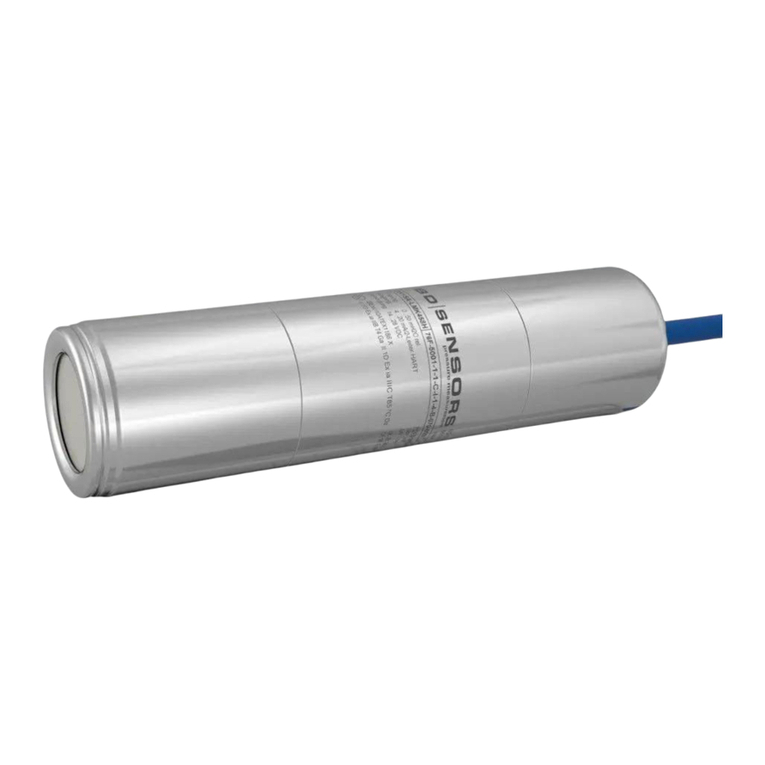
BD Sensors
BD Sensors LMK 457 User manual

BD Sensors
BD Sensors LMK 306 User manual
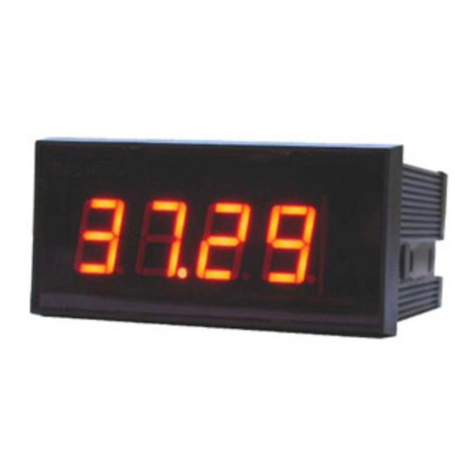
BD Sensors
BD Sensors BD SIMEX PAD-73S User manual
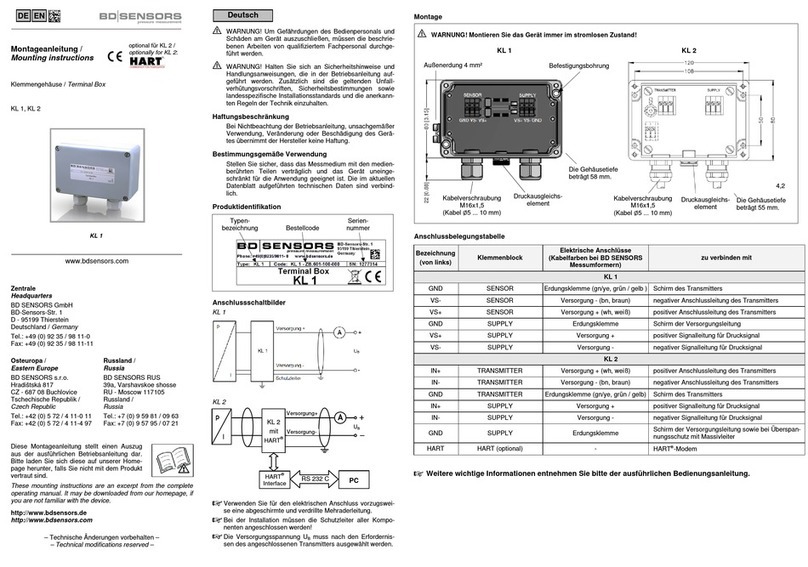
BD Sensors
BD Sensors KL 1 User manual
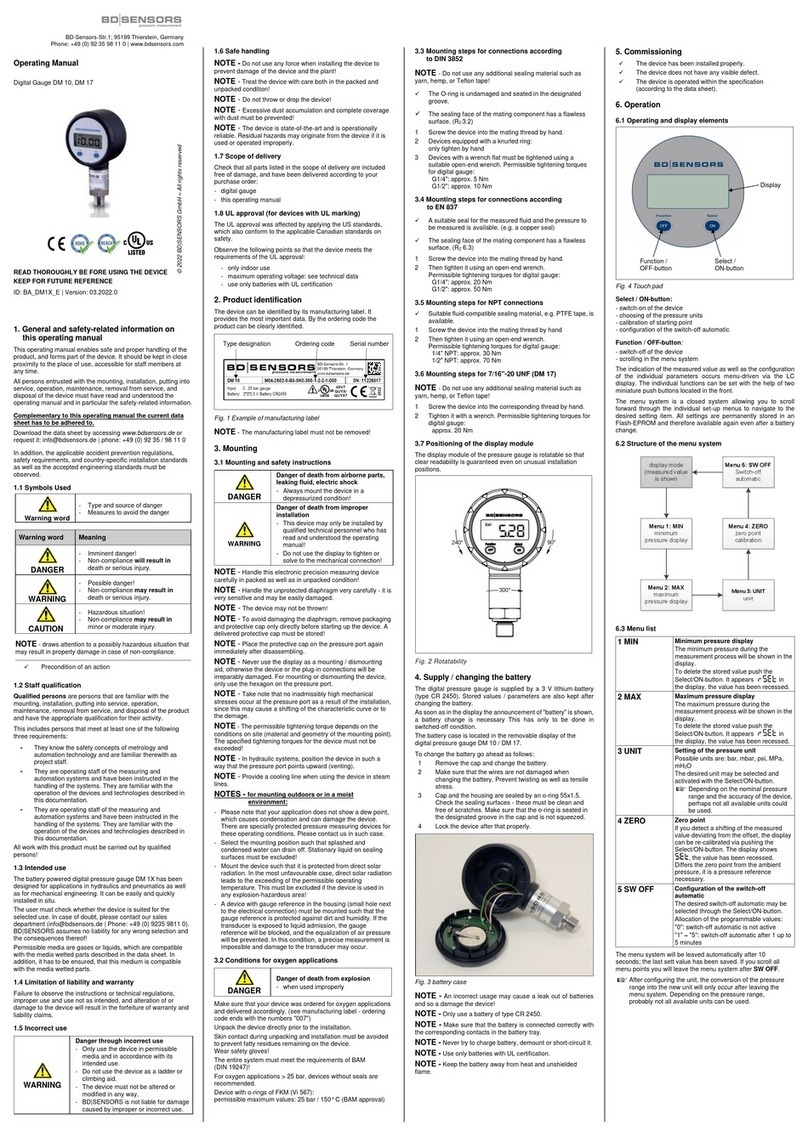
BD Sensors
BD Sensors DM 10 User manual

BD Sensors
BD Sensors LMK 457 User manual
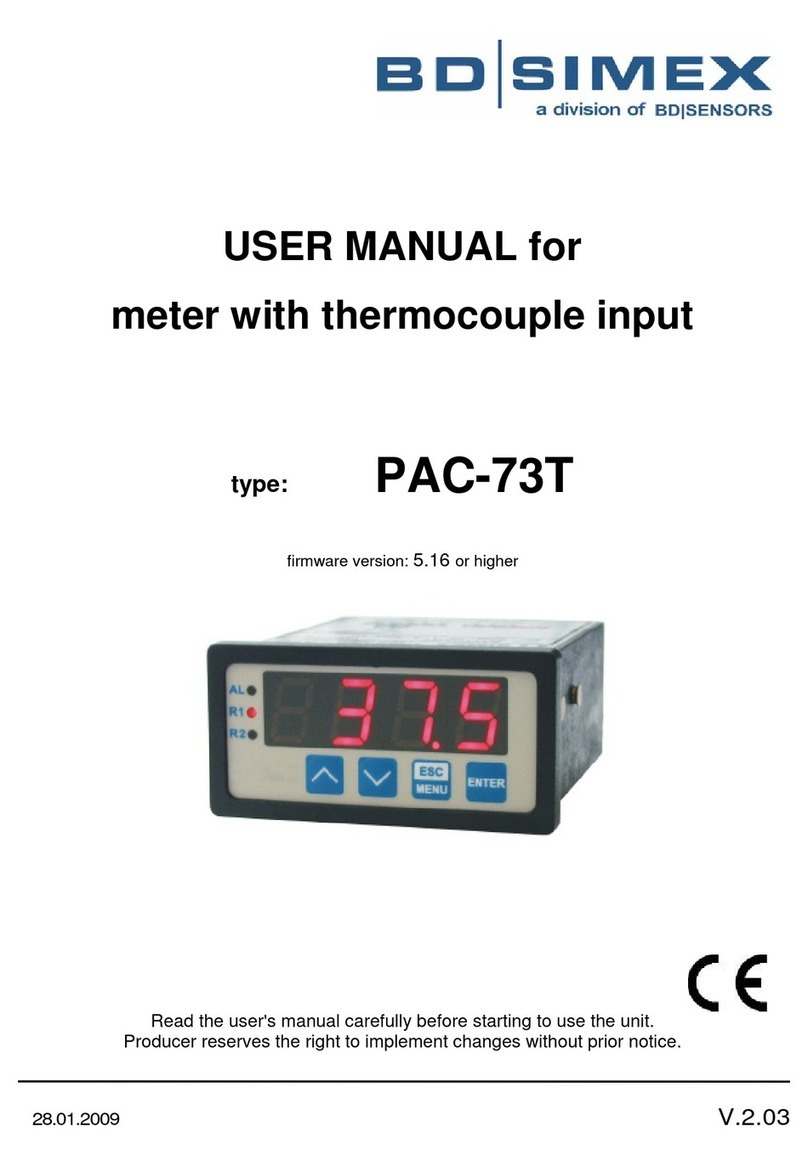
BD Sensors
BD Sensors BD SIMEX PAC-73T User manual

BD Sensors
BD Sensors BAROLI 02 User manual
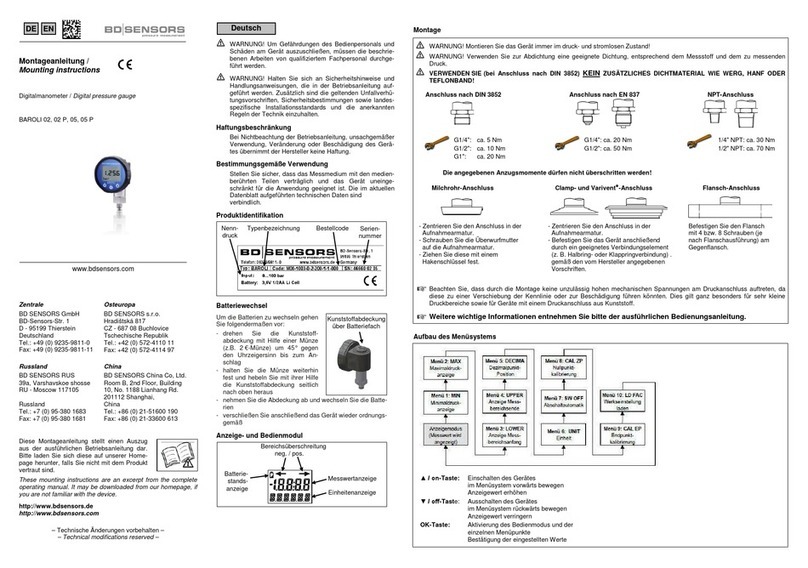
BD Sensors
BD Sensors BAROLI 02 User manual

